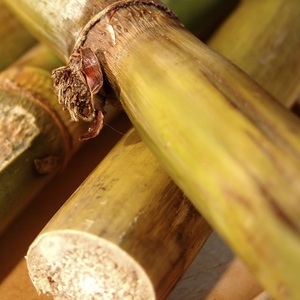UNICA: Ethanol sales up in early January

February 2, 2023
BY Erin Voegele
UNICA, the Brazilian sugarcane industry association, has released data showing that ethanol sales during the first half of January were up slightly when compared to the same period of 2021. Ethanol production was also up for the two-week period.
Mills in the south-central region of Brazil processed 439,830 tons of sugarcane during the first half of January. No sugarcane was processed by mills in the region during the same period of 2022. Total sugarcane processing since the beginning of the current harvest season, which began April 1, 2022, is at 542.09 million metric tons up 3.73 percent when compared to the same period of the previous harvest season.
Advertisement
Advertisement
Ethanol production for the first half of January reached 208.25 million liters (55.01 million gallons), including 96.66 million liters of hydrous ethanol, down 12.87 percent, and 111.59 million liters of anhydrous ethanol, up 224.55 percent. Corn ethanol accounted for 187.01 million liters, or 90 percent, of production during the two-week period, up 30.53 percent when compared to the same period of last year.
Ethanol production since the beginning of the current harvest season reached 27.67 billion liters, up 3.29 percent, including 15.9 billion liters of hydrous ethanol, down 0.31 percent, and 11.78 billion liters of anhydrous ethanol, up 8.59 percent. Corn ethanol accounted for 3.44 billion liters of production, up 26.41 percent when compared to the same period of the previous harvest.
Advertisement
Advertisement
Mills in the south-central region of Brazil sold 903.82 million liters of ethanol during the first half of January, up 1.9 percent when compared to the same period of last year. Sales of hydrous ethanol were at 399.8 million liters, down 1.42 percent, with sales of anhydrous ethanol at 541.19 million liters, up 9.77 percent.
Total sales since the beginning of the harvest season included 11.67 billion liters of hydrous ethanol, up 0.31 percent, and 8.64 billion liters of anhydrous ethanol, up 7.64 percent.
Related Stories
The Michigan Advanced Biofuels Coalition and Green Marine are partnering to accelerating adoption of sustainable biofuels to improve air quality and reduce GHG emissions in Michigan and across the Great Lakes and St. Lawrence Seaway.
The USDA reduced its outlook for 2024-’25 soybean oil use in biofuel production in its latest World Agricultural Supply and Demand Estimates report, released April 10. The outlook for soybean oil pricing was revised up.
EIA reduces production forecasts for biobased diesel, increases forecast for other fuels, including SAF
The U.S. Energy Information Administration reduced its 2025 forecasts for renewable diesel and biodiesel in its latest Short-Term Energy Outlook, released April 10. The outlook for “other biofuel” production, which includes SAF, was raised.
FutureFuel Corp. on March 26 announced the restart of its 59 MMgy biodiesel plant in Batesville, Arkansas. The company’s annual report, released April 4, indicates biodiesel production was down 24% last year when compared to 2023.
Neste has started producing SAF at its renewable products refinery in Rotterdam. The refinery has been modified to enable Neste to produce up to 500,000 tons of SAF per year. Neste’s global SAF production capacity is now 1.5 million tons.
Upcoming Events










